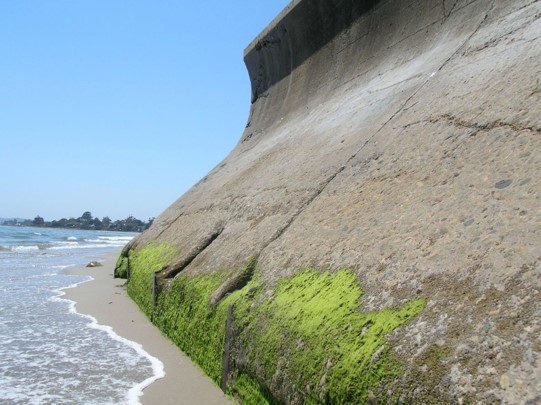Many coastal communities consider building above- or below-ground seawalls to avoid the risk of saltwater mixing with the freshwater aquifers that they rely on for drinking water. NCCOS-funded scientists recently published a paper in Scientific Reports (part of the Nature portfolio) that explains how seawalls may actually worsen inland flooding if not mitigated through other means.

Sea level rise is causing saltwater to move inland, mixing with the fresh groundwater. This process is known as saltwater intrusion. As the sea level rises, the fresh and salty groundwater also both rise toward the ground surface, leading to surface flooding.
Building walls that extend below ground can prevent the saltwater from mixing with the freshwater table, but researchers found this can have unintended consequences. Groundwater becomes “stuck’” behind the walls, creating an underground dam, which can cause even more water to move up to the ground surface (known as “groundwater emergence”). This water can in turn infiltrate buried infrastructure like sewer systems and water mains. Flooded water could be removed via pumping, but reliance on pumps is costly and can lead to a point of failure in flood mitigation plans.
This study notes that groundwater emergence should be considered when designing infrastructure focused on minimizing coastal flooding and saltwater intrusion, in order to avoid creating new hydrologic hazards in coastal areas. Approaches like those used in this study are important, as they allow for considering the combined impact of multiple sources of flooding. Further, models can examine several flood mitigation actions simultaneously to understand how they interact, which is crucial for equitably avoiding impacts from our changing climate.
This project is supported by the NCCOS Effects of Sea Level Rise (ESLR) Program. More details on this study can be found in this article and on its NCCOS project page. The project is co-led by the University of Arkansas and the University of Texas at Arlington.
